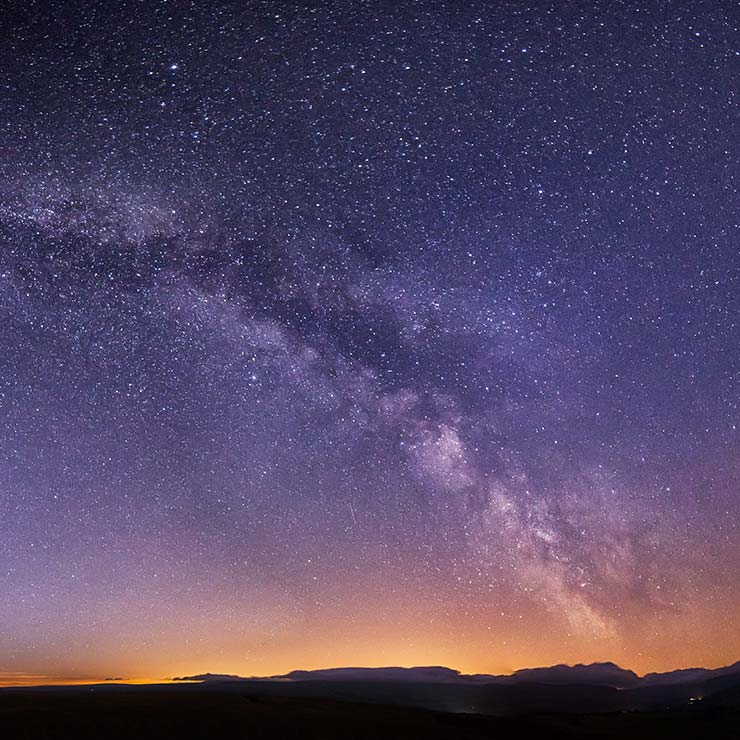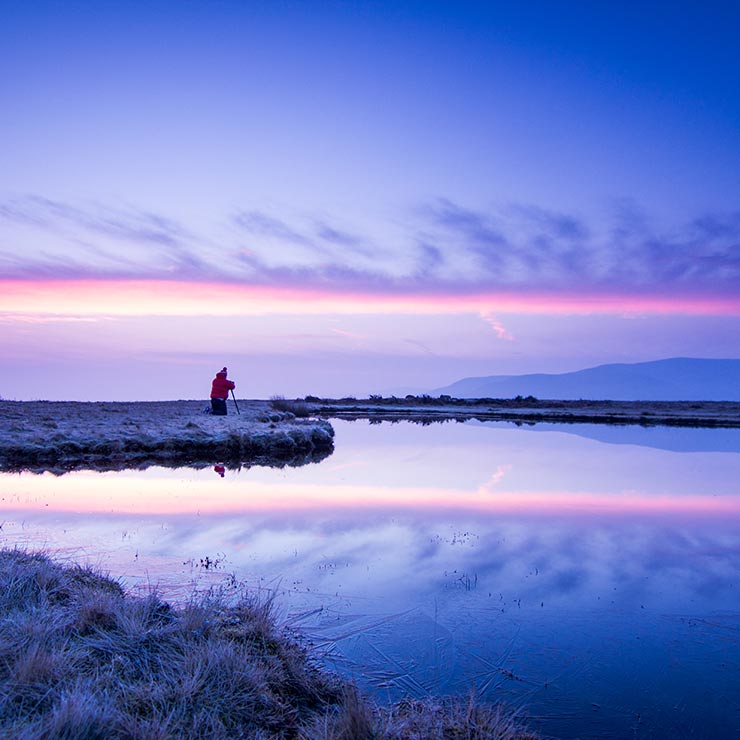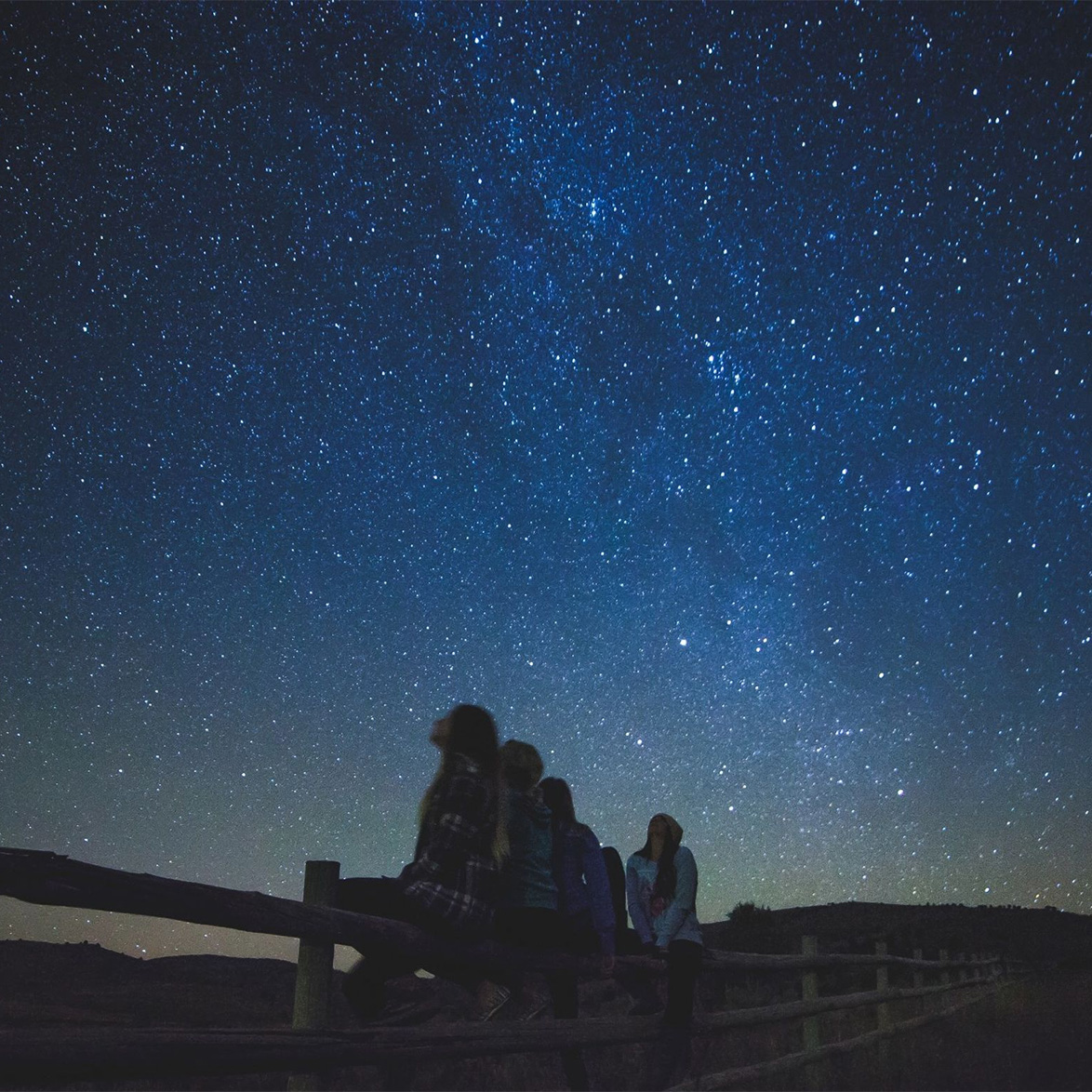Astrophotography
Put your coat on, grab your camera and dip into the exciting world of night-time photography.
Once you’ve found your way around the night sky, learned the names of the stars and constellations, spied a distant nebulae through a pair of binoculars or a telescope, you may find yourself wanting to capture the marvels of the night sky to enjoy beyond the magic of the moment. However, if you’re used to taking point-and-shoot photos, astrophotography can be pretty daunting. So put your coat on, take your camera and dip a toe into an exciting dark and light of astrophotography.
While you can get caught up with getting fancy equipment to capture the night skies, astrophotography doesn't have to be that difficult. Your ordinary point-and-shoot camera with a tripod can take great pictures of the Moon and much more. Conjunctions, star trails and meteors are great starters for budding astrophotographers.
Most digital cameras include shooting options that will give you some great skyscapes including night mode, continuous-fire, shutter-release, manual exposure control, and even manual focusing. Remember to always disable the flash!
Your camera’s auto exposure setting probably will not give good results, so manually set your exposure length and try different values to see what works best – take lots of shots, be patient and experiment. The great thing about digital photography is that your camera will usually have a feature that can tell the exposure time and other relevant technical information for future reference.
Conjunctions - Close Pairings
Among the most attractive astronomical events you can record with your point-and-shoot camera are conjunctions (close pairings) of the Moon and planets. When shooting conjunctions, you’ll often want to zoom in. Many point-and-shoot cameras have both optical and digital zoom. Optical zoom magnifies your chosen target, but Digital zoom simply crops in on the scene and blows up the pixels, which doesn’t help at all, as it just will make a blur bigger. If you can, disable the digital-zoom function or note how much optical zoom your camera has, and don’t zoom in any further.
Star Trails and Meteors
Star trails are delightful to capture and give a real sense of the turning world. The key is to keep the shutter open as long as possible to reveal the revolving of the heavens over the course of an evening. Your camera’s maximum exposure time may be only 10 to 15 seconds, but with the addition of one basic tool and a free computer program, it is possible to take excellent star-trail images. To hold down your shutter button so that you can record consecutive images without touching your camera get a small bar clamp with rubber grips (easy to find in a DIY store for about £6).
Tip: How to photograph a star trail:
1. Frame your target area using the camera’s widest zoom angle.
2. Add more interest to your final picture include a feature in the foreground to give the photo a sense of scale and place such as trees, hills, cliffs or other landscape features.
3. Start your image series, set your camera for its maximum exposure length (or to night mode, if you can’t select a particular shutter speed), then change the ISO speed of your camera to 400.
4.Set the lens focus at infinity (∞).
5. Select the continuous- fire shutter-release function, and put the clamp onto your camera to hold down the shutter button.
6. Stand back and shoot for at least 10 minutes — the longer, the better.
7. Once finished you will have dozens or even hundreds of short exposures with a few recognisable constellations visible in them.
8. Your next step is to download and install one of the free computer programs specifically written for the purpose of combining the individual frames: Link Star-trails and StarMax
Meteor showers can be shot and processed exactly the same method as star trails, although you will have to be more patient and keep you camera pointing in the same place all night. Pick an area of the sky that is both dark and photogenic, and maybe perhaps including your favourite constellation of the season – in Wales choose Draco! This same technique can also record passes of the International Space Station, the Space Shuttle, and flares from Iridium satellites.
You may also be interested in...

Shooting Stars and Comets
On a clear night, gaze up at the sky for long enough and, you will see shooting stars and maybe even spot a comet.

Sunrise and Sunset
The clean air and majestic landscapes of Wales make an idea setting for the beautiful red and orange colours of a sunrise or sunset.

Pembrokeshire Coast - Star Gazing at Castell Henllys
Have the night skies changed since the Iron Age? Find out at our Dark Skies star gazing event. Experts will be on hand to tell you about the different constellations visible in the night sky.
